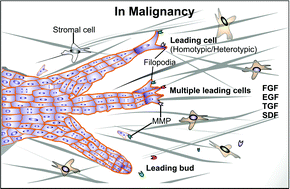Determinants of leader cells in collective cell migration†
Abstract
Collective migration is a basic mechanism of

- This article is part of the themed collection: Mechanisms of directed cell migration
* Corresponding authors
a
Department of Dermatology, University of Würzburg, Würzburg, Germany
E-mail:
antoine.khalil@stud-mail.uni-wuerzburg.de
b
Department of Cell Biology, Nijmegen Centre for Molecular Life Sciences, Radboud University Nijmegen Medical Centre
E-mail:
P.Friedl@ncmls.ru.nl
Collective migration is a basic mechanism of

 Please wait while we load your content...
Something went wrong. Try again?
Please wait while we load your content...
Something went wrong. Try again?
 Fetching data from CrossRef.
Fetching data from CrossRef.
This may take some time to load.
Loading related content
